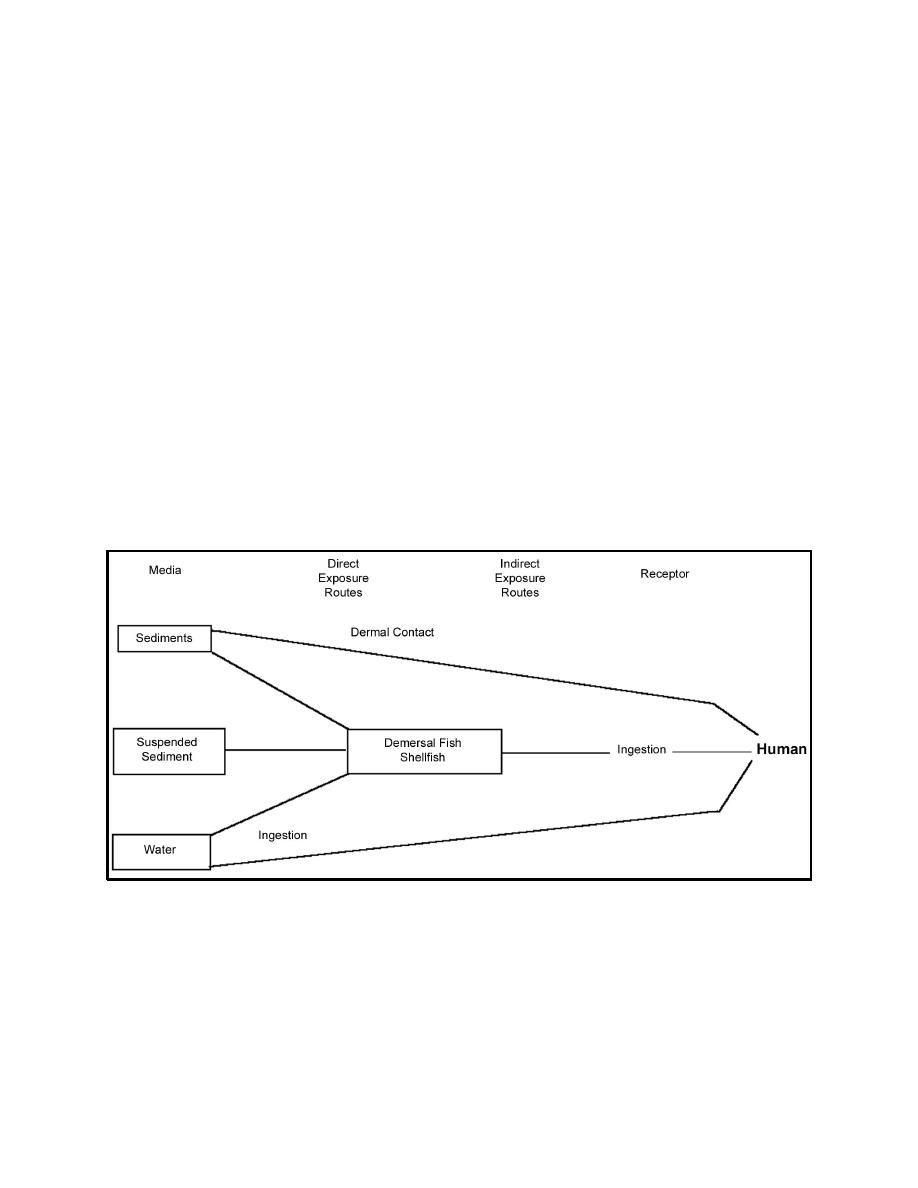 |
||
|
|
||
| |||||||||||||||
|
|
 Indirect exposure pathways
For aquatic disposal, the most likely human pathway is an indirect exposure
pathway through consumption of fish or shellfish (Figure 10). Therefore, this
section provides details and examples for assessing the pathway. Within this
pathway, the likely exposure route for humans to contaminated sediments and
surface water is the ingestion of fish or shellfish that have accumulated these
compounds. This exposure pathway fulfills the criteria for a complete exposure
pathway (as described above) because:
management site.
b. There is a transfer mechanism between the sediments and the seafood C
bioaccumulation.
c. There are exposure points where contact occurs C the commercially or
recreationally caught seafood which have been exposed to contaminants
from the management site.
d. There is an exposure route C the consumption of this seafood.
Figure 10. Example of a conceptual model showing direct and indirect exposure pathways for human
health
Characterization of this exposure setting for seafood ingestion requires:
a. Defining the exposed human population.
79
Chapter 4 Human Health Risk Assessment
|
|
Privacy Statement - Press Release - Copyright Information. - Contact Us - Support Integrated Publishing |